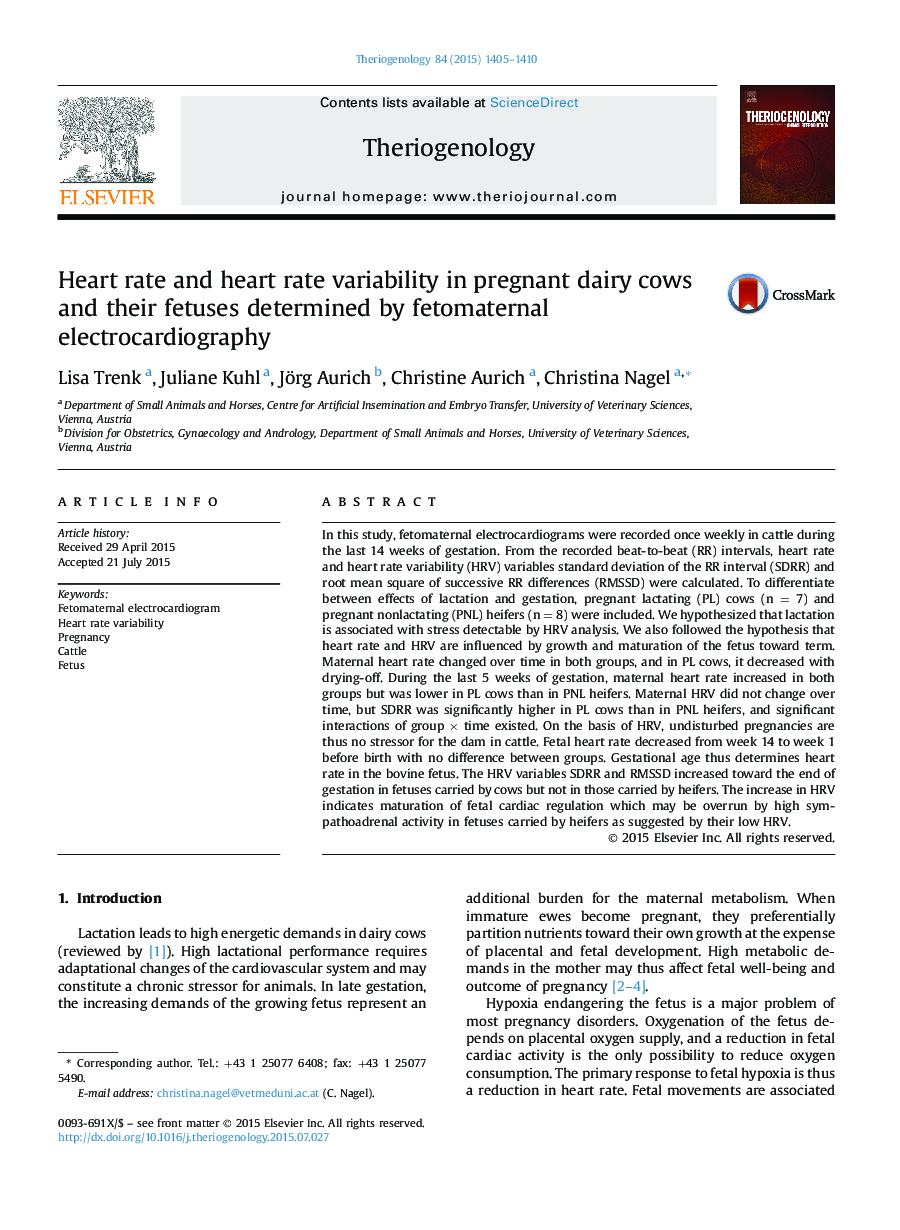| Article ID | Journal | Published Year | Pages | File Type |
|---|---|---|---|---|
| 2095021 | Theriogenology | 2015 | 6 Pages |
In this study, fetomaternal electrocardiograms were recorded once weekly in cattle during the last 14 weeks of gestation. From the recorded beat-to-beat (RR) intervals, heart rate and heart rate variability (HRV) variables standard deviation of the RR interval (SDRR) and root mean square of successive RR differences (RMSSD) were calculated. To differentiate between effects of lactation and gestation, pregnant lactating (PL) cows (n = 7) and pregnant nonlactating (PNL) heifers (n = 8) were included. We hypothesized that lactation is associated with stress detectable by HRV analysis. We also followed the hypothesis that heart rate and HRV are influenced by growth and maturation of the fetus toward term. Maternal heart rate changed over time in both groups, and in PL cows, it decreased with drying-off. During the last 5 weeks of gestation, maternal heart rate increased in both groups but was lower in PL cows than in PNL heifers. Maternal HRV did not change over time, but SDRR was significantly higher in PL cows than in PNL heifers, and significant interactions of group × time existed. On the basis of HRV, undisturbed pregnancies are thus no stressor for the dam in cattle. Fetal heart rate decreased from week 14 to week 1 before birth with no difference between groups. Gestational age thus determines heart rate in the bovine fetus. The HRV variables SDRR and RMSSD increased toward the end of gestation in fetuses carried by cows but not in those carried by heifers. The increase in HRV indicates maturation of fetal cardiac regulation which may be overrun by high sympathoadrenal activity in fetuses carried by heifers as suggested by their low HRV.
